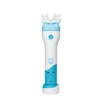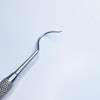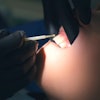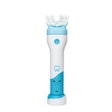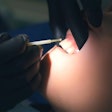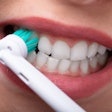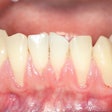
There has been a paradigm shift toward a patient-centered biophysical approach to oral healthcare, and oral health-related quality of life (OHRQoL) is becoming increasingly relevant in dentistry, according to a literature search published on September 14 in the Journal of Evidence-Based Dental Practice.
The study identified more than 3,000 OHRQoL-related articles, authored by more than 9,000 individuals worldwide. It was the first study of its kind, according to the authors, led by Xueqian Yu of Wuhan University in China.
A literature search was performed to collect OHRQoL-related research. The authors employed bibliometric mapping, a tool commonly used to discover the overall landscape of high-impact research and the developing trend of a field or topic. Researchers then analyzed the articles, drawing conclusions about OHRQoL and how it has changed over time.
The number of OHRQoL-related articles grew steadily, with more than 100 articles produced each year following 2011. The top 20 most cited research articles were published between 1997 and 2011, gaining at least 178 citations and about nine average citations each year.
"These classic articles laid the foundation of OHRQoL research in aspects of instrument development on patients' OHRQoL," wrote the study's authors.
The most common study design was cross-sectional, a common practice of OHRQoL instrument development and validation. Clinical trials were commonly linked to the assessment of treatment outcomes, including implant restorations, dental care treatment, and operative and conservative treatment of mandibular condylar fractures.
Three review articles that appeared on the most cited list were published after OHRQoL research began to take off in 2007.
"The high citation rate of reviews not only proved the solid research foundation established in the 1990s and 2000s, but also indicated that more research outputs were facilitated by the previous high-quality research and review articles," Yu and colleagues wrote.
Prolific authors and institutions extended across Europe, Oceania, North America, South America, and Asia, suggesting that the OHRQoL has drawn broad interest from researchers globally.
"Brazil was the most productive country, which was different from the bibliometric findings in other dental research topics where the USA usually produces most articles," the authors stated.
However, European and North American countries had higher citation counts, indicating greater influence. Prolific countries were all ranked within the top 30 in the gross domestic product rankings of the World Bank, suggesting that countries with a larger economy place more emphasis on patient-centered research and oral health promotion.
Additionally, the clustering of high-frequency keywords provides an overview of OHRQoL research that spans various fields of interest, ages, oral conditions, and treatments. High-citation intensities of "consensus," "meta-analysis," and "systematic review" show the emergence of comprehensive and summative publications based on previous research.
Highly prevalent diseases, including dental caries and tooth loss, have been a global burden on public health management.
"However, the declining trend of the citation impact of keywords related to cariology, periodontics and tooth loss may correlate with enhancing public health policies and disease prevention," Yu and colleagues explained.
"OHRQoL is an impactful topic in dental health care as it is not only useful in dental research and patient-centered clinical outcome measurements but also provides valuable guidance to dental public health administration and policy making," the study authors concluded. "In the future, this topic is expected to maintain high productivity and achieve broader application."
